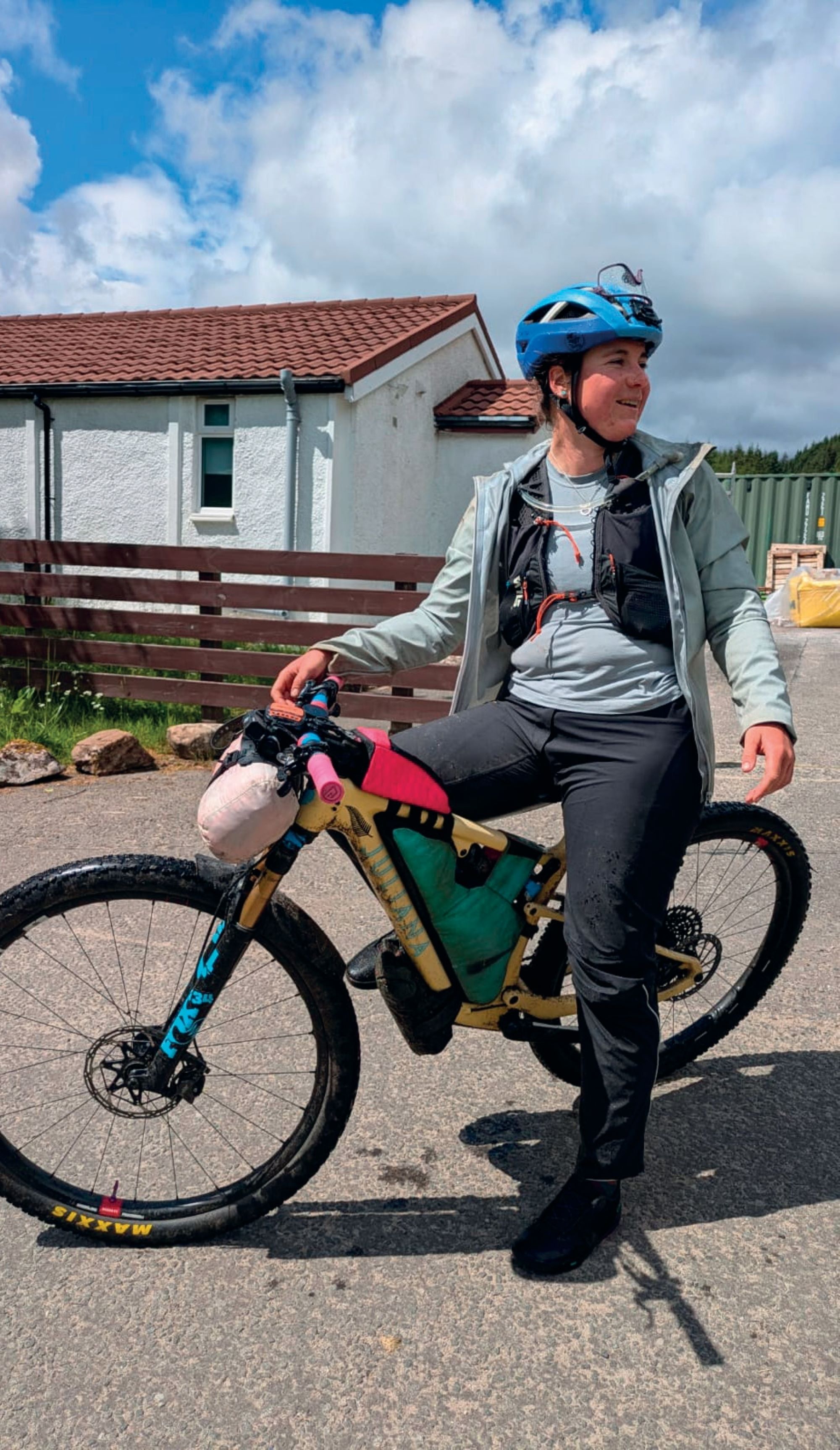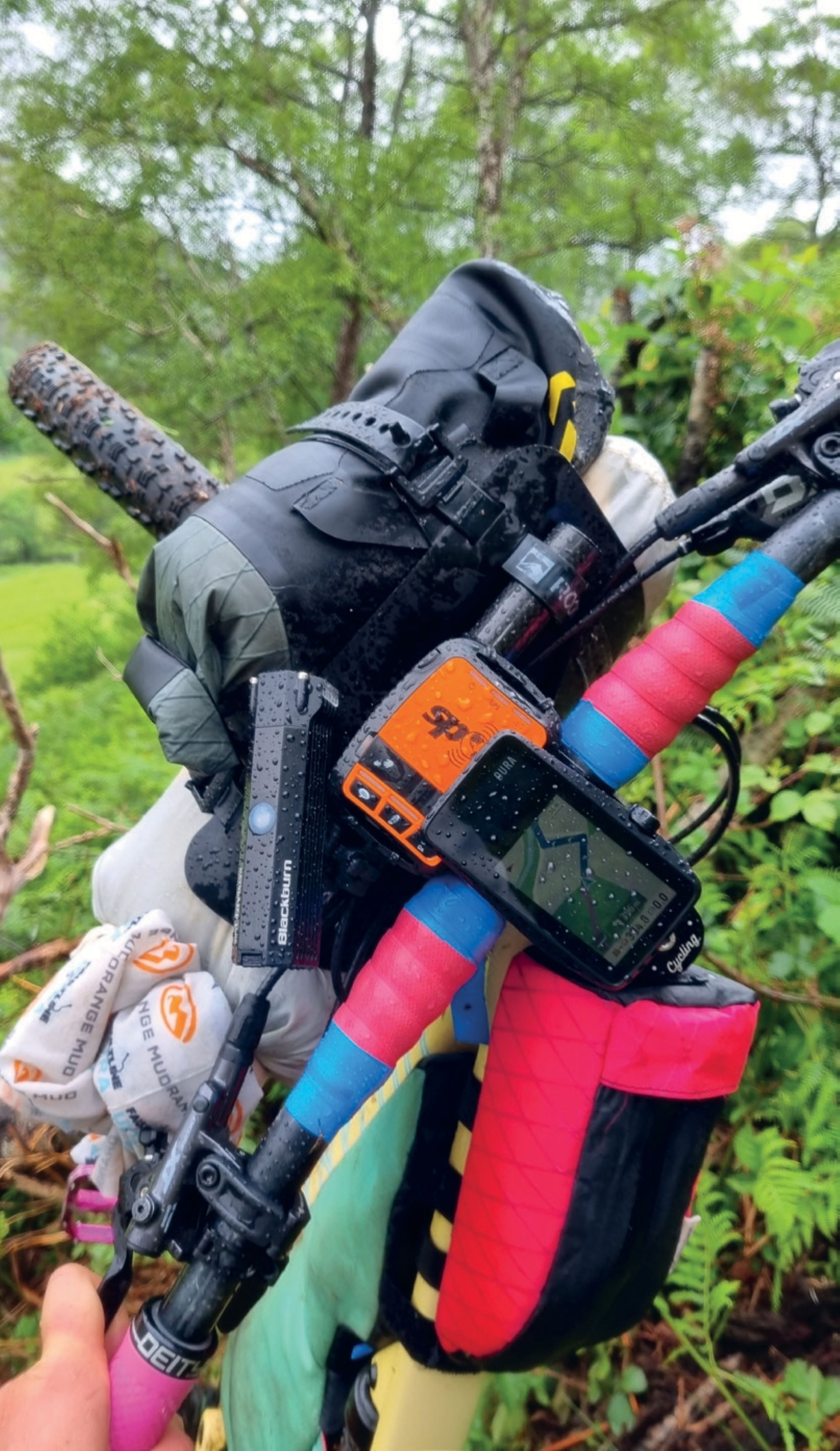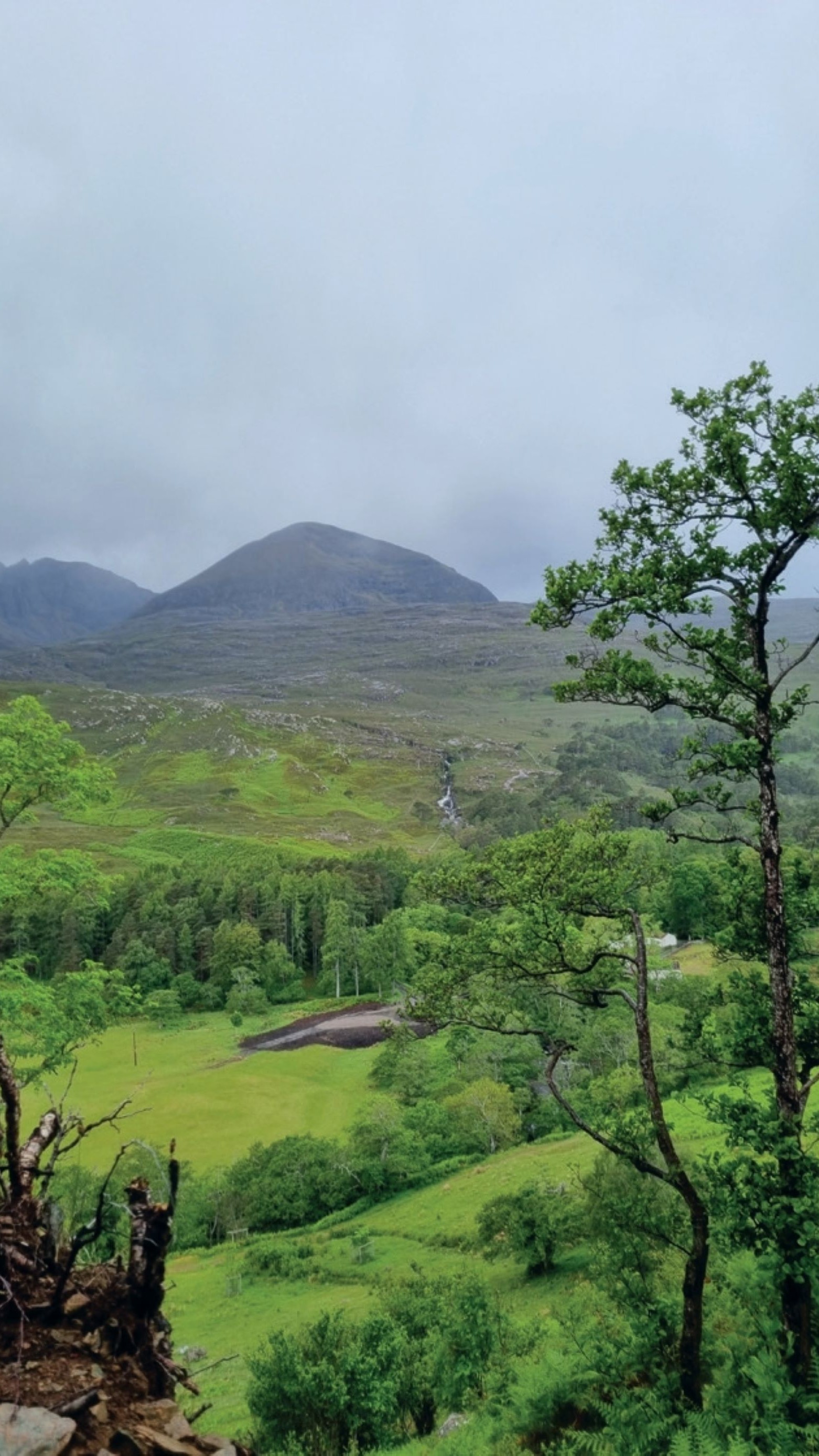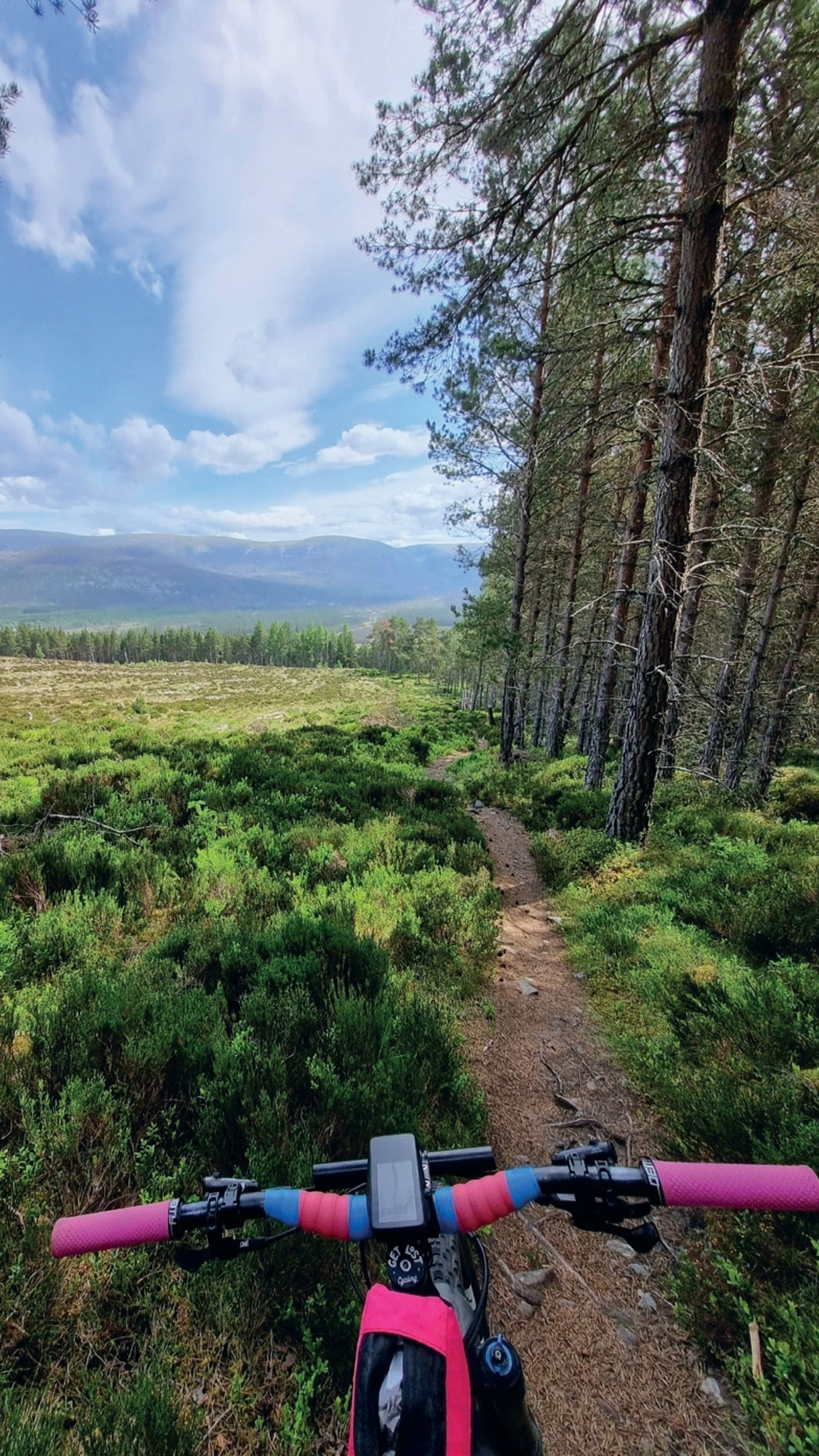Words Liam Friary
Images Lisa Ng, Henry Jaine & Emma Bateup
Recently, Emma Bateup made history as the first woman—and seventh overall finisher—of the 2025 Highland Trail 550 in Scotland. She completed the gruelling route in an impressive four days, four hours and 27 minutes.
Mental Game.
Your recent success at the Highland Trail 550 was one for the books! At what point during those four days did you realise you weren’t just competing in the women’s category, but potentially setting an entirely new standard?
“I felt like I was riding well from the start; I was feeling good and around people I knew were fast. It was on the second afternoon that I checked the tracking and saw that I was sitting in third place, which blew my mind. Prior to that I’d mostly been focusing on myself and where the second placed woman was (Kerry MacPhee and I had such a close race until she had to pull out). Unfortunately, then I started overthinking it and made time costing mistakes. But it was very cool to feel like I was part of the whole race. As the sport is getting faster, it’s becoming more common for women to be pushing the pace too and riding into strong overall placings. It’s pretty special to be a part of that.”
Home vs. Scottish Highlands.
Coming from New Zealand’s adventure racing scene to Scotland’s Highland Trail 550, how did your experience with New Zealand’s challenging terrain prepare you for the unique demands of Scottish bikepacking, and what surprised you most about the differences?
“I knew going into the race that the terrain and weather would be similar to NZ, so it was nice to feel fairly at home straight away. To have experienced plenty of challenging river crossings with bikes proved to be valuable, a big part of which is knowing when to not attempt a crossing. Sometimes it’s better to come up with an alternative plan or wait for other riders to cross together. The weather was a big factor in this year’s race, with one of the worst editions they’ve had. Living in Wellington for the past few years set me up perfectly, the wind and rain was on a par to a stormy day back home (so just four days in a row of it!). Having experienced similar conditions frequently, I was confident in what I’ve learnt about clothing choices and trusted the gear I had. The biggest difference I found was the daylight hours, especially in the northern part of the route. One night never got completely dark, there was still a faint glow behind the clouds. This meant that riding through the night was much easier, and I never quite lined up my few sleeps with darkness; the combination of cold and light skies didn’t result in much sleeping anyway! On a lot of the trails there were drain ditches built across the trail with rocks, all varied in size, some easily hoppable and a few not so much. It took me a while to get confident on them and on a few I misjudged the size, resulting in flat tires.”
Home vs. Scottish Highlands.
Coming from New Zealand’s adventure racing scene to Scotland’s Highland Trail 550, how did your experience with New Zealand’s challenging terrain prepare you for the unique demands of Scottish bikepacking, and what surprised you most about the differences?
“I knew going into the race that the terrain and weather would be similar to NZ, so it was nice to feel fairly at home straight away. To have experienced plenty of challenging river crossings with bikes proved to be valuable, a big part of which is knowing when to not attempt a crossing. Sometimes it’s better to come up with an alternative plan or wait for other riders to cross together. The weather was a big factor in this year’s race, with one of the worst editions they’ve had. Living in Wellington for the past few years set me up perfectly, the wind and rain was on a par to a stormy day back home (so just four days in a row of it!). Having experienced similar conditions frequently, I was confident in what I’ve learnt about clothing choices and trusted the gear I had. The biggest difference I found was the daylight hours, especially in the northern part of the route. One night never got completely dark, there was still a faint glow behind the clouds. This meant that riding through the night was much easier, and I never quite lined up my few sleeps with darkness; the combination of cold and light skies didn’t result in much sleeping anyway! On a lot of the trails there were drain ditches built across the trail with rocks, all varied in size, some easily hoppable and a few not so much. It took me a while to get confident on them and on a few I misjudged the size, resulting in flat tires.”
Solo Sufferfest.
The Highland Trail 550 is notorious for its hike-a-bike sections, unpredictable weather, and river crossings. Can you walk us through your lowest moment during the race and how you mentally reset to keep pushing forward?
“My lowest point was on the morning of day four; I’d missed two key resupplies the day before due to a tactical error and ended up rationing my food for over half a day. It ran out with a while to go to the next town, and the hunger kicked in. My energy levels got super low and with it, my mental state. There were a lot of tears! But I kept reminding myself that the quickest way to solve it was to get to the next town so that kept me moving forward. The motto was ‘the only way through is through’. Pulling out was never an option; the long trip from NZ is very good motivation to finish a hard race.”

Key Equipment & Statistics.
Given your completion time and the technical demands of the route, how do you balance carrying enough gear to handle emergencies, with maintaining the speed necessary to be competitive? What’s the one piece of equipment that saved your race? Do you have overall stats of race data, food, and travel to/from?
“Finding the balance between being lightweight and prepared/safe is something that’s coming with experience. After a big learning moment during an event earlier this year, a key takeaway was that being lightweight doesn’t necessarily translate to being fast. I’d had to stop and find shelter because I wasn’t carrying enough clothing to keep moving, which lost me far more time than just carrying a bit of extra weight would have. Going into the Highland Trail I knew that sleep wouldn’t be as necessary due to the length of event, so I took more clothing to use while moving instead of sleeping gear. The most important part of my kit was my Ground Effect raincoat—I pretty much lived in it! Even when it wasn’t raining the wind chill was a big factor so using it as a windbreaker kept me cosy.

Adventure Addiction.
You’re described as someone who’s “always plotting and planning the next endeavour”. With Highland Trail 550 conquered, what adventure planning is currently keeping you awake at night?
“The next big adventure on my horizon is the Tour Te Waipounamu early next year. This is the event that kicked it all off for me and it’ll be my third time racing. My brain is already swimming with ideas for gear setup and race strategy; with every event comes a heap of learning, so I’m always excited to put it into practice. There are a few local challenges that will make for a good leadup, along with a few ‘shorter’ races to keep things interesting!”

The Women’s Field.
Your victory puts a spotlight on women in ultra-endurance bikepacking. What do you want to say to women who look at events like Highland Trail 550 and think “that’s impossible for me”?
“The most important thing is just to start. Start with something small and work your way up. No one got anywhere overnight, it takes lots of small steps to get there. Push your boundaries at the pace you feel comfortable with, and with challenge comes experience and confidence. I’m a big believer of jumping into the deep end, which isn’t for everyone, but you’ll find that your limits are so much further than you think.”







